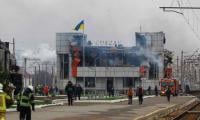LAHORE: Development in Pakistan is hostage to the situation in Karachi compared with that in Lahore or Punjab, where the law-and-order situation and infrastructure are better and the extortion mafia is not quite active.
Karachi is the country’s largest city and has a well-functioning seaport. It is home to some of the largest industries in the country. Its infrastructure, however, is in shambles. It is extremely painful to move container-laden heavy traffic in its industrial areas. Another major drawback is the questionable law-and-order situation in the city. Street crime, including phone snatching and car lifting, is the norm. On top of that, businesses have to deal with the ‘bhatta’ mafia, and there are no exceptions.
In fact, this extortion industry has developed over time and perhaps collects more money than official revenue departments in a systematic way. There are millions of tax evaders in Karachi, but it is rare to find a ‘bhatta evader’ in the city.
This tactic was initiated, and for a long time monopolized, by one political party. As the influence of that political party waned, other groups jumped in, including organized criminal groups, some religious parties and many more.
This extortion has scared away investors from the city. Many have shifted their units to Punjab.Ideally, all investors would love to operate from Karachi, which is a port city. Industries that import raw materials bear high costs when they transport those raw materials upcountry.
The industries that are in export business have to dispatch export consignments to Karachi for shipments. What Karachi needs are business operations without the extortion mafia; peace in the streets like in Lahore; and infrastructure that exists in almost all industrial estates of Punjab. Infrastructure in large industrial estates in Lahore and its suburbs is in excellent condition.
It is because of better law and order and infrastructure facilities in Lahore that the largest motorcycle plant of the country is located 25km from Lahore. Tractor manufacturing takes place exclusively in Punjab. Most new entrants in car assembly are located in the province. In 1970, over 60 per cent of the industries in Pakistan were based in Karachi.
After the separation of East Pakistan in 1971, ethnic riots disturbed Karachi’s peace, and the gradual relocation of industries started. Today, 60 per cent of the industries are in Punjab. But the problem is that apart from textiles, most others are based on imported raw materials.
While these industries cater to domestic needs, exports become expensive because of the high transportation cost of importing raw materials and then exporting back finished goods through the Karachi Port. One positive aspect in this regard is an increase in the efficiencies of Punjab-based industries.
But we are ruining our trade potential by keeping Karachi as an extortion hub and infrastructure disaster. If the government needs to exert its writ, it is in Karachi where every ethnic or religious strife should be dealt with an iron hand.
Quality infrastructure must be upgraded as done in Punjab. Existing industries in Punjab will survive and further improve their efficiencies, while investors will prefer Karachi for new industrial investment.















